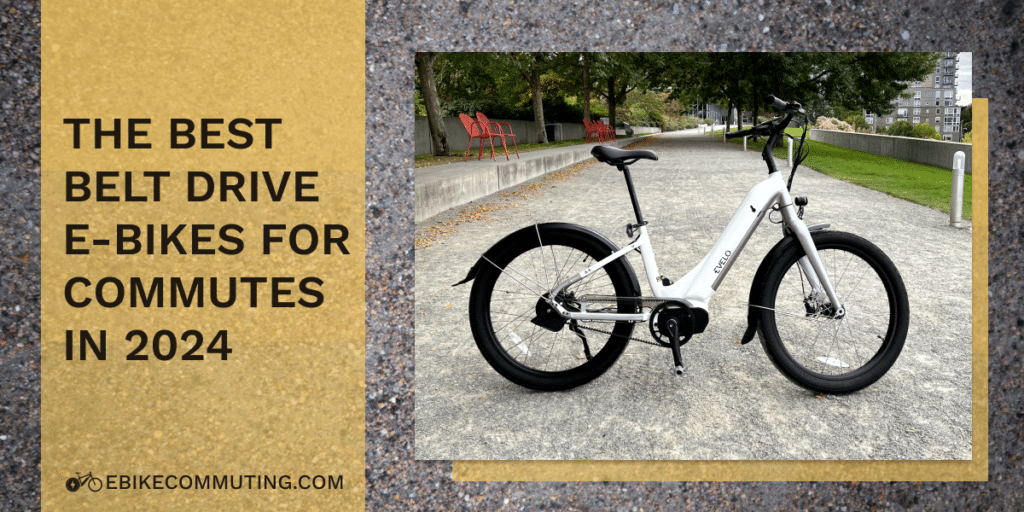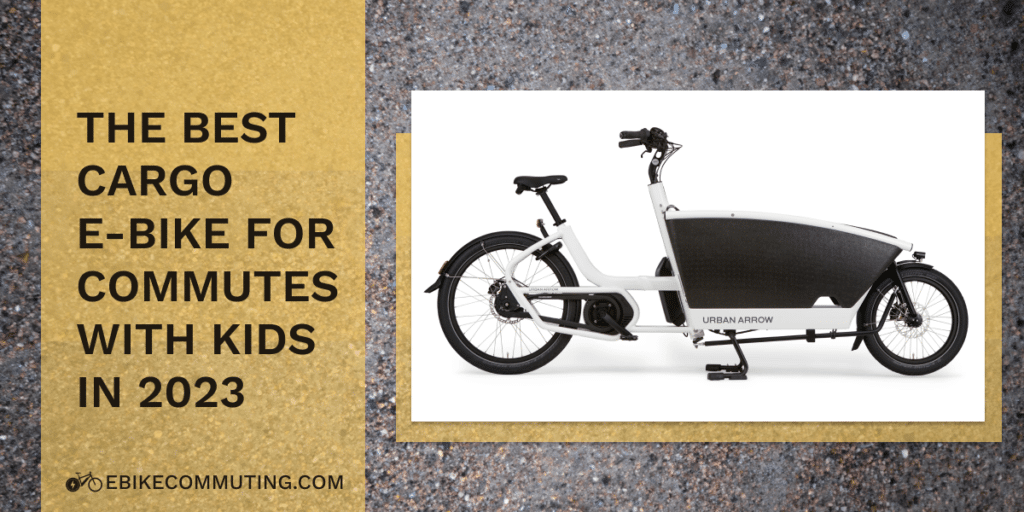👋🏻 We help our readers find the best quality e-bikes and gear to fit their needs. We strive to physically test the products that we recommend. When you buy through our links, we may earn a commission.
To turn the wheels when you pedal, e-bikes come with either a belt drive or a traditional chain drivetrain. A belt drive is a rubber belt that turns the wheels when you pedal, and it either has no gears (aka single speed) or gears in an internal hub. This is unlike a traditional chain that hops between gears when you shift it. The main benefit of belt drives with internal gears is that they are lower maintenance than traditional chain drivetrains. Chains will slowly stretch over time and they also require you to lubricate and clean them every few weeks. If you don’t do proper maintenance they can rust and wear out faster, and let’s face it, most people aren’t cleaning and lubricating their chain every few weeks.
The other benefit of a belt drive with internal gears is that the gearing is enclosed and protected from the elements. It doesn’t collect dirt, debris, and moisture which means it’s going to stay smoother and quieter for longer.
Bottom line, belt drive e-bikes feel like you are pedaling as smooth as butter.
So, what’s the best belt drive e-bike?
After extensive test rides, our top pick is the EVELO Omega due to its high-quality build, excellent torque, relaxed style, and outstanding customer support. Additionally, it’s sneaky fast. The Priority Current comes in second, and our top pick for the best budget belt drive is the Tenways CGO800S. Read the full article for our reviews of several belt drive e-bikes.
Our Pick
EVELO Omega
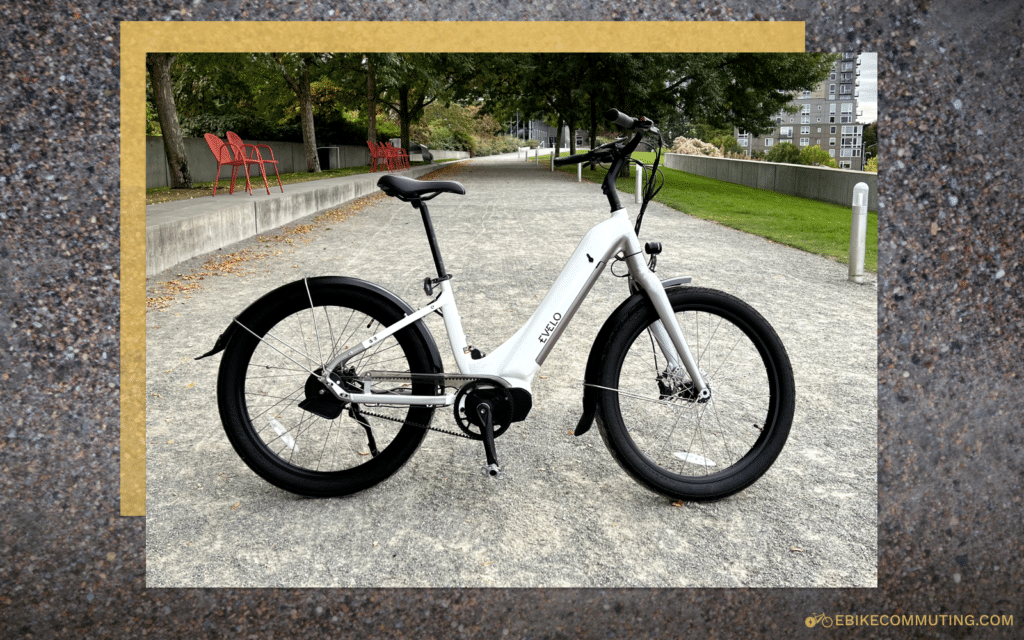
What we like about it
Before discussing the Omega, I’d like to highlight EVELO, a Seattle-based company. With a proven track record in the e-bike industry since 2012, they offer superior quality e-bikes backed by excellent customer service. One standout feature is their 21-day home trial. If you’re not satisfied with the e-bike after 21 days, they will cover the cost of return shipping for a full refund, with no hidden restocking fees. EVELO also checks in with customers during this period, with specialists calling to ask about the e-bike’s performance and fit. EVELO truly goes above and beyond.
Now, let talk about the Omega. It’s a Class 2 e-bike, but can be configured to have a top speed of 25 mph. EVELO uses a Gates Carbon belt drive which is of course best in class. This ensures a quiet and low maintenance ride.
Weighing 64 pounds, it’s equipped with a 750-watt mid-drive motor that delivers 115 Nm of torque. This well exceeds the minimum torque of 85 Nm that I find necessary for enjoyable hilly commutes. Hence, the Omega has plenty of power and torque.
I really like that the Omega has a throttle. Most e-bikes that go above 20mph don’t come with a throttle, but EVELO gets around this by shipping as Class 2 and then allowing you to configure it to a Class 3.
The frame integrated battery offers 60 miles of range and they also sell an optional range extender.
The Omega e-bike boasts two notable differences than the other e-bikes on this list. The first is its impressive speed and surprisingly quiet motor. I have yet to encounter an e-bike with such a noiseless motor. With it’s relaxed riding posture and quiet motor, I’ve started calling the Omega “sneaky fast.”
Second, the Omega employs Enviolo’s automatic shifting system. By syncing with the Enviolo app and setting your chosen cadence (75rpm in my case), the hub automatically adjusts gears to match the landscape, keeping your cadence constant. This means you can forget about gear shifting and focus on enjoying the ride.
With its premium components, robust construction, and plush tires, the Omega delivers superior performance and durability, making it a top pick for riders seeking both power and dependability.
In summary, the Omega stands out as an exceptional e-bike and is our pick for the best belt drive e-bike in 2024.
Where it falls short
The only limitation is that it may not be comfortable for individuals above 6’2″. As a person of this height myself, I concur with this suggestion. While the ride was indeed cozy for me, I noticed that people taller than this might find the bike’s structure less accommodating.
What we’ve heard around town
- “The customer service has been phenomenal.”
- “I don’t think you can go wrong with any bike from EVELO.”
- “It’s expensive, but you get what you pay for when it comes to e-bikes”
Read our full review of the EVELO Omega here.
Watch our Youtube review
Runner Up
Priority Current
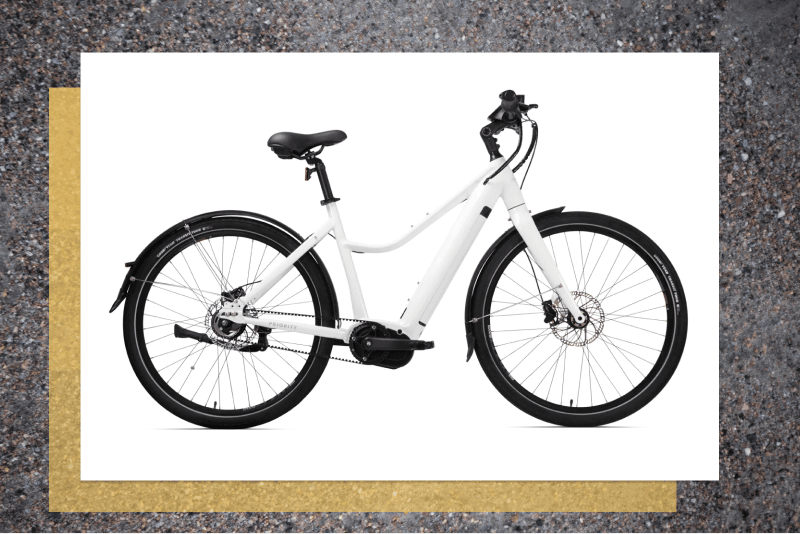
What we like about it
The Priority Current is a solid e-bike. It is sold as a Class 1 e-bike (20mph speed), but they offer a way to configure it to be a Class 3 e-bike, which would give you a max speed of 28mph. Depending on the type of commute you have, it may be nice to have the extra speed sometimes. Though, it’s important to note that increasing it to a Class 3 e-bike means the battery range goes down. The 500 watt battery gives you 20 to 50 miles range if it’s a Class 1, but if you convert the e-bike to Class 3, you’ll see that range drop to probably around 15 to 25 miles.
If you have hills on your commute, this e-bike will handle it well due to its powerful 500 watt mid-drive motor. Now, a lot of people only look at watts when they buy an e-bike, but in our opinion, torque is way more important. You can have all the watts in the world, but without much torque, it’s useless. The Priority Current has a max torque of 140nm, which is much higher than other e-bikes on this list, and more torque means more acceleration.
You can choose between the Shimano or Enviolo hub which costs $200 more. We recommend opting for the Enviolo hub, it’s worth the extra cost. It’s a much more smooth shifting experience because it doesn’t have set gears. Instead of being restricted to only 5 gear ratios you can always find the perfect gear ratio for any incline.
This is a great e-bike for people of all sizes because it is offered in three different sizes, making it suitable for people from roughly 5’4” to 6’7”.
The Current includes a USB port for charging your phone or device, which is a useful feature if you find yourself in a pinch with a low battery on your way to or from work.
Finally, a standout bonus of this e-bike is that Priority has gotten rave reviews about their customer service and support, something that some other e-bike manufacturers have not achieved.
Where it falls short
The Current doesn’t have a throttle, which makes getting started at a red light a bit slower. It’s not a deal breaker for me in the end because not all e-bikes have throttles but we do like the e-bikes that have them.
The rear rack is not integrated into the bike frame, which is the style I tend to prefer. Instead, Priority offers two versions of the optional rear rack, both attached after-the-fact with bolts. If you want to add a toddler seat, then make sure you get the “Axiom Transit” rack, because it can support up to 110 pounds, versus the “Hudson” which only supports 35 pounds. It is nice that it offers two options so it can at least accommodate a toddler seat, unlike the VanMoof S5.
What we’ve heard around town
- “I love Priority’s great customer service and support”
- “Both of my Current’s have developed creaks from the motor mounts/screws when under heavy load, such as climbing a hill”
- “I’m very pleased with it after two 10 mile roundtrip commutes”
- “Mine handles the hills where I live no problem”
- “Love the belt drive and IGH combo on my Current!”
Read our full review of the Priority Current
Watch our Youtube review
Best Budget Belt Drive E-Bike
Tenways CGO800S
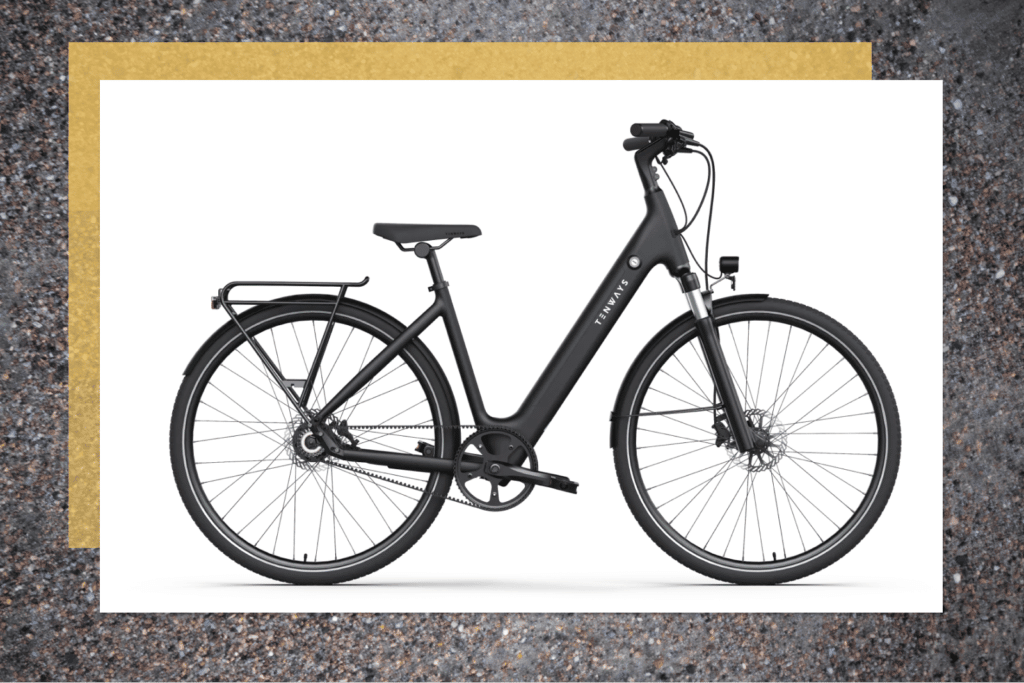
What we like about it
The Tenways CGO800S has a minimalist design aesthetic. It is a simple, but energetic, commuter e-bike, suitable for a range of rider sizes due to its step thru frame.
It is one of the only e-bikes I’ve seen that includes a turn indicator on the rear light… how often you’ll actually use it, or that it will be noticed by a motorist is unknown, but a cool feature nonetheless.
I like that the integrated LCD screen supports turn by turn directions. First of all, I like that it has an LCD screen at all, because I don’t like to mount my phone on my handlebars. And the fact that it supports turn by turn directions is unique and super convenient if you are riding somewhere new.
Its front suspension reduces the bumps, making for a smoother and more enjoyable ride on bumpy city streets. Its 250 watt rear hub motor doesn’t provide a ton of power, but since the e-bike is “only” 50.7 pound, this should give you plenty of power for basic city commutes. It comes with a torque sensor, which is our preferred way of signaling the need for more power, rather than a cadence sensor which is more common.
Tenways claims it has a 62 mile battery range, but that is on the lowest pedal assist setting. It’s much more likely that you’ll get a range in the 20 to 30 mile range when riding on max pedal assist. That said, I tend to think that any e-bike company that claims a range over 40 miles will likely be sufficient for most commutes, even if that’s only on the lowest pedal assist.
Where it falls short
The mudguards don’t come down as far as we’d like on a commuter e-bike. Definitely consider adding some extension flaps if you plan to use this e-bike for commutes in rainy winter weather.
This is a single speed e-bike, so if you have any big hills on your commute I’d recommend looking for a belt drive e-bike with an internal gear hub.
What we’ve heard around town
- “It copes well with rolling terrain”
- “Good support team at Tenways”
- “Easy enough to assemble”
Read our full review of the Tenways CGO800S
All of the Rest
Vvolt Sirius
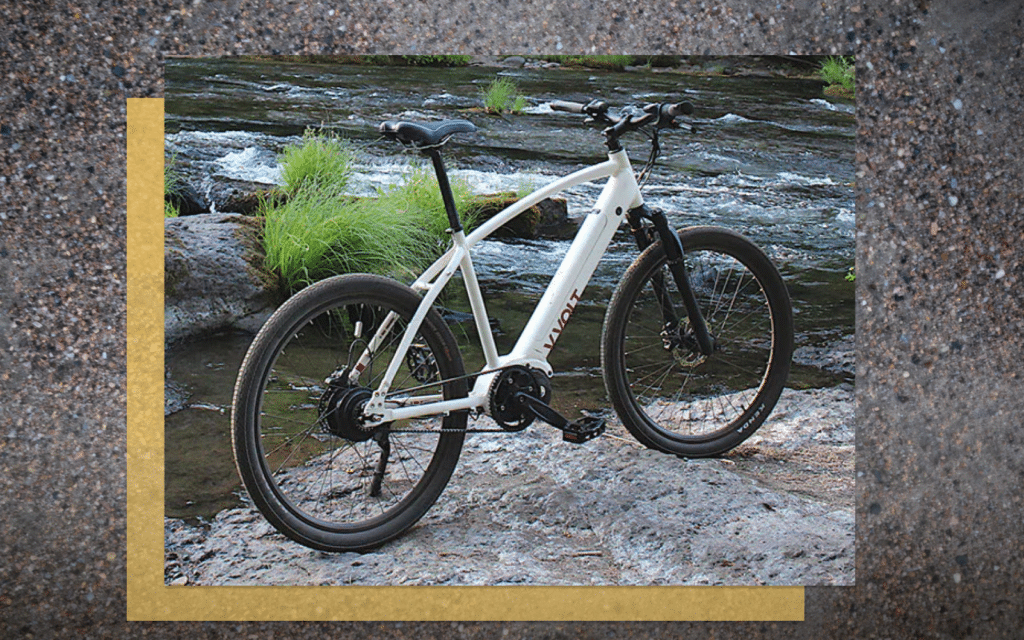
What we like about it
The Vvolt Sirius e-bike’s 650-watt mid-drive motor is a defining feature. Boasting a solid 80 Nm of torque. This torque is especially beneficial for hill climbing, setting the Sirius apart from many of its competitors. Moreover, the mid-drive placement of the motor enhances the bike’s balance and weight distribution, making it easier and more comfortable to handle, especially on uneven terrains.
The Sirius model distinguishes itself from its predecessors like the Alpha by incorporating a torque sensor instead of a cadence sensor. This advanced sensor measures the force applied by the rider on the pedals, allowing the motor to respond more dynamically. This feature creates a more intuitive and responsive riding experience, closely mimicking the feel of a traditional bike but with the added benefit of electric assistance.
The inclusion of the Enviolo continuously variable transmission hub is a significant upgrade. It allows riders to fine-tune their gear ratio seamlessly, adapting effortlessly to various inclines and riding conditions. Paired with this is the maintenance-free Gates carbon belt drive, which offers a smooth pedaling experience.
The Sirius comes equipped with a 375 Wh battery, offering a range of 15 to 40 miles, which is quite versatile for urban commuting and weekend adventures. The battery’s removable design is a practical feature, allowing for easy charging irrespective of the bike’s location. Furthermore, Vvolt offers an upgrade to a 500 Wh battery for extended range, catering to those who have longer commutes or enjoy lengthy rides.
The Sirius is designed with rider comfort in mind, featuring a front suspension fork and large, two-inch knobby tires. This combination is ideal for absorbing shocks from uneven surfaces, making bumpy rides smoother and more bearable. Whether navigating city streets or exploring light off-road trails, the bike’s suspension and tire setup provide a consistently comfortable and stable ride.
Where it falls short
For a bike that positions itself as a capable commuter, the absence of integrated lights is a notable omission. While Vvolt includes rechargeable lights, they fall short in terms of brightness and convenience compared to integrated options. This is a significant oversight for those who ride in low-light conditions and could necessitate additional investments in aftermarket lighting solutions.
Despite the Sirius’s overall high-quality build, certain components like the brakes, front fork, pedals, and saddle don’t match the standard set by the rest of the bike. They are functional but might not meet the expectations of more discerning riders. Upgrades in these areas could enhance the overall riding experience, particularly for those who put their bikes through more rigorous use.
What we’ve heard around town
- “This is a fun bike to ride, very quick and nimble”
- “Handles the gravel fire roads near my house no problem”
- “Wish they had put proper lights in this thing”
Read our full review of the Vvolt Sirius
Vvolt Alpha S
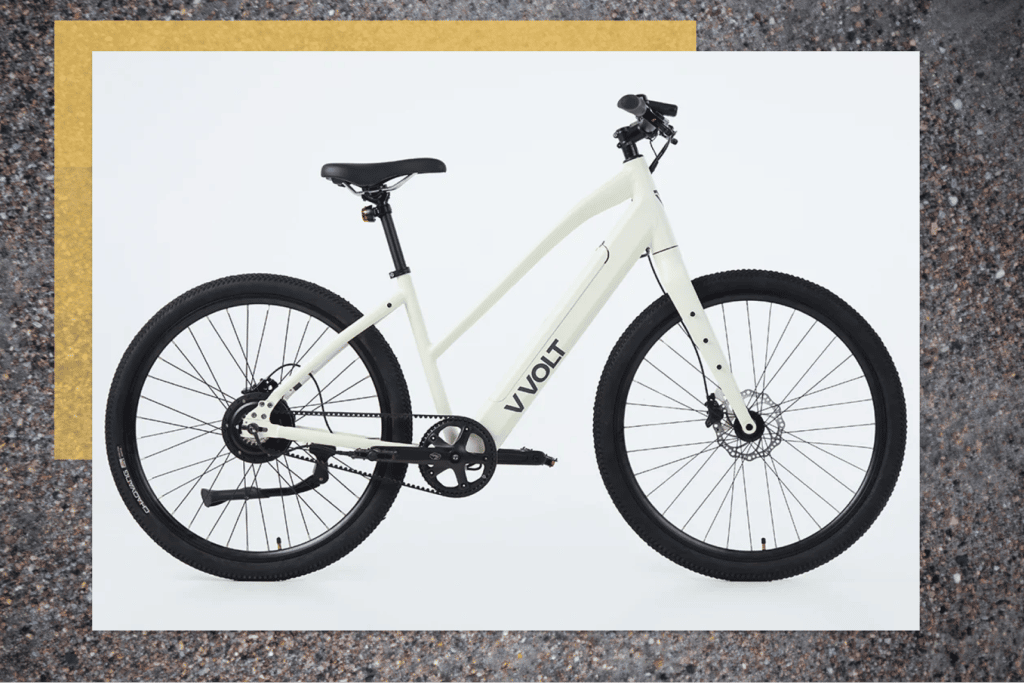
What we like about it
Vvolt has purposefully chosen a smaller (ie lighter) battery for the Alpha S, and no gears, to keep this e-bike a simple no-frills commuter. It is lightweight at roughly 45 pounds and can reach 20 mph.
The frame can support larger 2” tires, which combined with the front suspension make for a comfortable ride. It handles the bumps with ease.
Its removable battery is a big plus and can come in handy if you can’t charge your e-bike in your employer’s bike locker.
Where it falls short
Due to its intentional simplicity, it doesn’t come with integrated rain fenders. You can order PDW fenders ($140), but In our experience we’ve found those tend to need more adjustments than integrated ones.
The battery range is on the shorter side at only 20 to 40 miles, but if you have a commute that is 10 miles or less then this shouldn’t be too much of an issue.
My preference would have been for a mid-drive motor, but instead Vvolt added a rear hub motor, which will make going up steep hills difficult, especially with its single-speed drive train.
This e-bike doesn’t come with an integrated rear rack. The optional rear rack ($65) can support up to 60 pounds (good for a toddler seat), but it doesn’t look as aesthetically pleasing as an integrated rack would.
What we’ve heard around town
- “I wanted something simple and effortless and it’s precisely that”
- “The smaller battery forces me to ride with less power and get more exercise…probably a good thing”
- “I really like the slate paint job”
Read our full review of the Vvolt Alpha
Gazelle Medeo T9 HMB
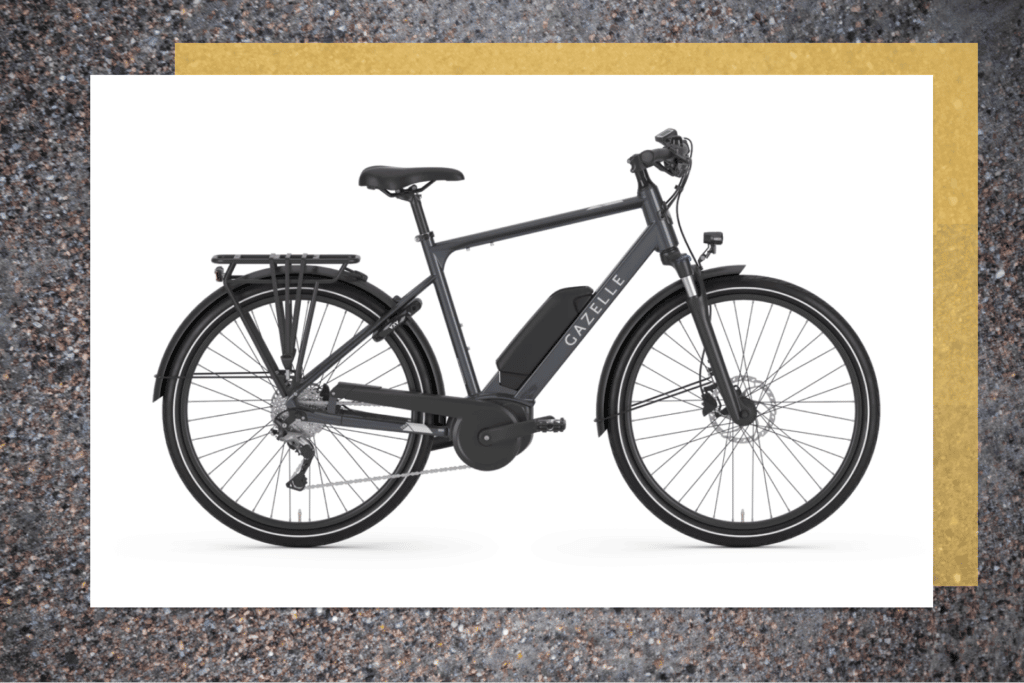
What we like about it
The Gazelle Medeo T9 HMB is a great mid-range priced e-bike, and particularly nice for city commutes. A few different aspects of the Gazelle make it great for city commutes. For one, Gazelle has added Schwalbe’s thick tires. The thick tires have two benefits. They are puncture resistant and they will absorb the bumps betters. In addition, the front suspension fork help with potholes and gravel in the bike lane.
It has a max speed of 20mph, and includes a throttle. The powerful Bosch mid drive motor with 50 Nm of torque will make powering up hills feel like a breeze. Perfect if you’ve got hills on your commute. Gazelle boasts a solid 60 mile range when the pedal assist is set to “eco” mode, but if you prefer to ride your e-bike with full pedal assist, as I do, then the range is only 20 or 25 miles. At 48.1 pounds this is a light e-bike, so it’s a good pick if you are going to be lugging it up your apartment stairs.
When it comes to security, they’ve added an “Amsterdam lock” which makes it incredibly easy to lock the rear wheel. I’d still recommend that you bring along a u-lock to lock it to a rack when running errands or leaving it outside a cafe for a bit, but it’s nice that they’ve added the “Amsterdam lock” so that you always have some sort of security.
Aesthetically, it’s also very pleasing. I love that they’ve routed all of the various cables internally in the frame. This is common on performance road bikes and it’s nice to see e-bike companies adopting this. On a commuter e-bike the internal cables are less about aerodynamic performance and more about giving the e-bike frame a nice clean look. It also comes in some nice colors. It seems like most e-bikes we review have very limited color options, it’s refreshing to see that Gazelle offers 3 color options that aren’t just black or gray. They are anthracite grey (a nice blue-gray), champion red, or iced blue. I’m partial to the iced blue.
Finally, their 2 year warranty is a nice bonus.
Where it falls short
The 25 mile range is not great, I would have liked to see them put a bigger battery on this e-bike.
If you go with the low-step frame the battery is placed on the rear carrier rack so that you can’t add a toddler seat to the rear rack. Go with the high-step frame if you plan on using this bike for daycare runs. I also really dislike the look of the battery sitting on the back rack and much prefer when it’s integrated into the frame of the e-bike.
What we’ve heard around town
- “As a bike mechanic, I’ve found Gazelles are easy to work with and service”
- “It has a high build quality and has been absolutely reliable”
- “I’m rolling up to 1,500 miles this season without an issue”
Serial 1 Rush/Cty Step Thru

What we like about it
Battery, battery, battery. The Serial 1 Rush/Cty Step Thru has a great battery. The battery is large so it gives you a strong range — depending on terrain and the pedal assist level it’s estimated to have a range of 30-90 miles. Another plus when it comes to their battery is the charge time. It can fully charge the battery in 4 hours. This is a lot quicker than most other e-bikes I’ve used and can be very convenient if you have a long commute that requires you to charge at your destination as well as at home.
Another plus is its automatic gear shifter (by Enviolo), which is constantly adjusting to maintain the optimal pedaling cadence. This can take a little bit of getting used to if you are someone very accustomed to riding traditional bikes, but once you do it’s pretty nice not to have to think about shifting. You can also fine tune-it via the Enviolo App so that it better matches your riding preferences. For example, you can increase the amount of power that is added at various pedaling cadences. Speaking of Apps, the Serial 1 companion app offers some nice features, such as a real-time ride dashboard, as well as the ability to track the bike in case it’s stolen.
It can accelerate well, and stop well. Specifically, it has 90Nm of torque which translates to great acceleration, and it has hydraulic four-piston-caliper disc brakes rather than many other e-bikes that have two-piston-caliper disc brakes. These brakes give you more stopping power.
It has my preferred style of rear and front racks, in that their integrated / built into the e-bike. This makes it easy to add panniers or a kid’s seat.
Finally, I love the two tone paint job. IMO it’s the best looking e-bike on this list.
Where it falls short
The price point of $4,999 is just too high for us in terms of what it offers. There are other e-bikes out there at the same price point that offer more power and longer range.
The maximum combined weight limit (meaning e-bike, rider, plus cargo) is only 280 pounds. If you subtract the weight of the e-bike (70 pounds), then that only gives you a remaining 220 pounds for the rider’s weight and cargo. You could probably go over this weight, but I’d be hesitant to recommend this e-bike if you are over 250 pounds.
What we’ve heard around town
- “The motor is buttery smooth and quiet”
- “The power seems underwhelming…it’s hard to get up to 28 mph”
- “A highly capable commuter e-bike”
- “Not my first choice for a $5k e-bike”
Cowboy 4
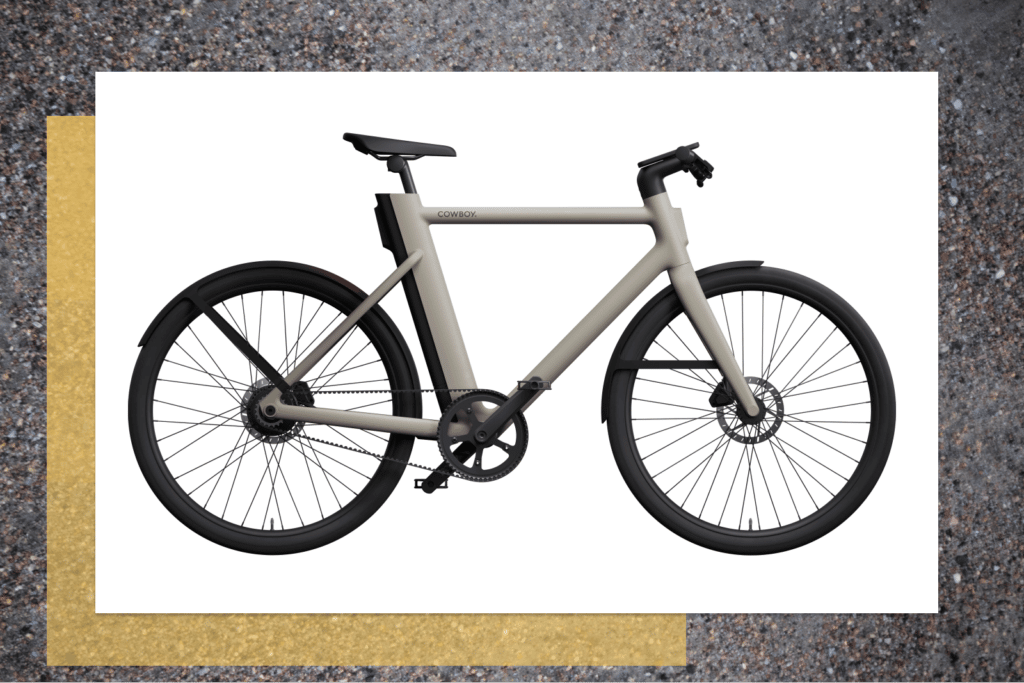
What we like about it
The Cowboy 4 looks slick and fast due to it’s more aggressive geometry. This equates to a more aggressive riding posture, meaning you are leaned forward towards the handlebars and less upright than a cruiser style e-bike. Having ridden road bikes for over a decade I’m used to this forward leaning position and enjoy it, but for some it may take some getting used to.
I like that Cowboy built a great companion app that includes lots of cool features like real time ride stats, and turn by turn directions. You can also mount your phone on the handlebars and get a wireless charge along the way. That said, I don’t like to mount my phone to my handlebars because I expect it to fly off going over a bump in the road.
45Nm of torque gives you good acceleration from this 250 watt rear hub motor, especially since the e-bike is relatively light at only 41.6 pounds. Cowboy opted for torque sensors, rather than a cadence sensor, which give you a much more natural feeling of acceleration. The harder you push down on the pedals, the more power the rear hub motor produces.
Finally, another callout is that it has some great security features, such as theft detection alerts, the ability to track the e-bike remotely via GPS, as well as crash detection which will notify your emergency contacts if it detects a crash.
Where it falls short
There is no suspension, which means you can feel every little bump along your route. This is not a dealbreaker for me, but something to keep in mind if your commute has a lot of cobblestones or potholes.
My preference would have been for a mid-drive motor, but instead Cowboy added a rear hub motor, which will make going up steep hills difficult, especially with its single-speed drive train.
It doesn’t come with an integrated rear rack, but on the plus side the optional rear rack they offer ($95) can support up to 60 pounds which makes it easy to add a child’s seat to the back. This is a much higher weight capacity than many of the other optional rear racks I’ve come across.
What we’ve heard around town
- “The torque sensor is amazing”
- “I’ve been cycling for 20+ years and the Cowboy is really enjoyable to ride”
- “Seat was uncomfortable and hurt after a 15 mile ride”
- “I can easily deplete the battery in two hours of riding”
- “Support is amazing, anything that should be covered under warranty, is”
Ride1UP Roadster V2
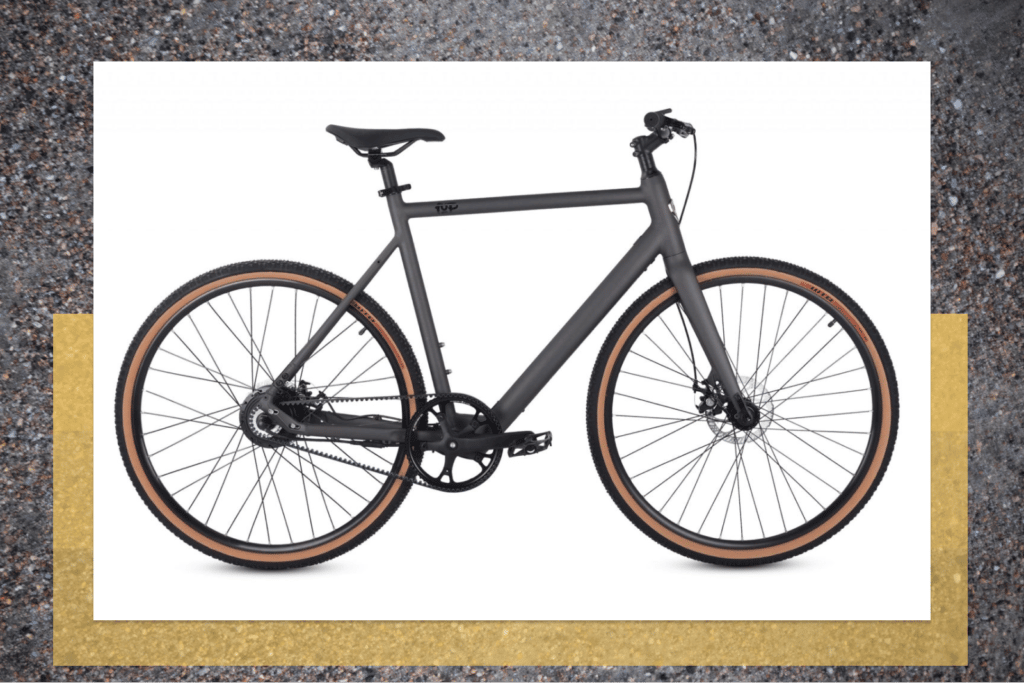
What we like about it
The standouts of the Ride1Up Roadster V2 are the fact that it’s relatively inexpensive for an e-bike, especially with a belt drive. And it’s a very light e-bike, at only 33 pounds. If you’re on a budget and need to lug your e-bike up or down stairs as part of your commute, this is an e-bike to consider (though see where it falls short, considerably, below). I wish I had this featherweight instead of my 65 pound RadCity when I was living in San Francisco and had to carry my e-bike up three flights of stairs to end my commute every day.
The 350w geared hub motor with 40nm torque doesn’t give you a ton of power for hills, but it should be sufficient for a flat’ish commute, but if you are a bigger rider (225 lbs+) this e-bike may feel underpowered to you.
I also like that it has a classic city bike messenger style to the frame and doesn’t look like an e-bike. This could be a positive to someone who prefers to ride an e-bike that looks a bit more like a regular bicycle.
Where it falls short
First of all, it uses rim brakes (very rare for an e-bike), rather than the more common disc brakes. I don’t like this because rim brakes have less stopping power than disc brakes and when it comes to e-bikes you tend to be traveling fast (20+ mph). It’s important to be able to stop quickly, and rim brakes are not going to do it. Their stopping power gets even worse in inclement weather.
To keep the price down, Ride1UP uses a lot of low quality parts for the Roadster V2. This means the brakes, wheels, tires, and crank will wear down quickly and probably need adjustments regularly to keep them operating smoothly.
The 36V 7.0ah Samsung battery is small and only gives you an estimated 20-30 mile range. If you plan to ride on the highest pedal assist (as I often do) you can expect closer to 10 to 15 miles of range. This means you will need to charge this e-bike daily, which I prefer not to have to do.
This is a single speed e-bike, so if you have any big hills on your commute I’d recommend looking for a belt drive e-bike with an internal gear hub.
Finally, no suspension means you can feel every little bump along your route, which is not ideal for commuting, and especially something to keep in mind if your commute has a lot of cobblestones or potholes.
What we’ve heard around town
- “It’s so light! I love it!”
- “Parts could be better — I got 3 flats in less than a year”
- “My battery seems to die pretty fast now”
- “Meh, it’s fine for a cheap belt drive bike”
Read our full review of the Ride1UP Roadster V2
Common Questions
Why are belt drive e-bikes so expensive?
Belt drive e-bikes are more expensive because the components of the belt drive system cost more money to manufacturer than traditional chains. This is partially because they are less common and thus the cost has not been driven down by the shear volume of manufacturers producing the parts. The other reason is because the rear hub is slightly more complicated to manufacturer than external gears and derailleur. All of this combined increases the price of belt drive e-bikes.
How long do belt drive e-bikes last?
There isn’t a perfect answer to this question, a lot will depend on the quality of the manufacturer as well as the riding conditions. However, Gates Carbon Drive, a reputable belt drive manufacturer has stated that their system can last for 50,000 miles. This is much longer than a traditional chain system where it’s recommended that you replace your chain every 2,000 to 3,000 miles.
How is a belt drive e-bike better than a chain e-bike?
Lower maintenance! The main benefit of belt drives is that they are lower maintenance than traditional chain drivetrains. Traditional chains will slowly stretch over time and they also require you to lubricate and clean them every few weeks. If you don’t do proper maintenance they can rust and wear out faster, and let’s face it, most people aren’t cleaning and lubricating their chain every few weeks (I sure am not).
Another benefit of a belt drive with internal gears is that the gears are enclosed and protected from rain, dirt, etc. It doesn’t collect debris and moisture, which means it’s going to stay smoother and quieter for longer.
Belt drives last a lot longer, with the best brands stating that they can endure 50,000 miles, whereas your average chain needs to be replaced every 2,000 to 3,000 miles.
Bottom line, belt drive e-bikes feel like you are pedaling as smooth as butter and last longer.
